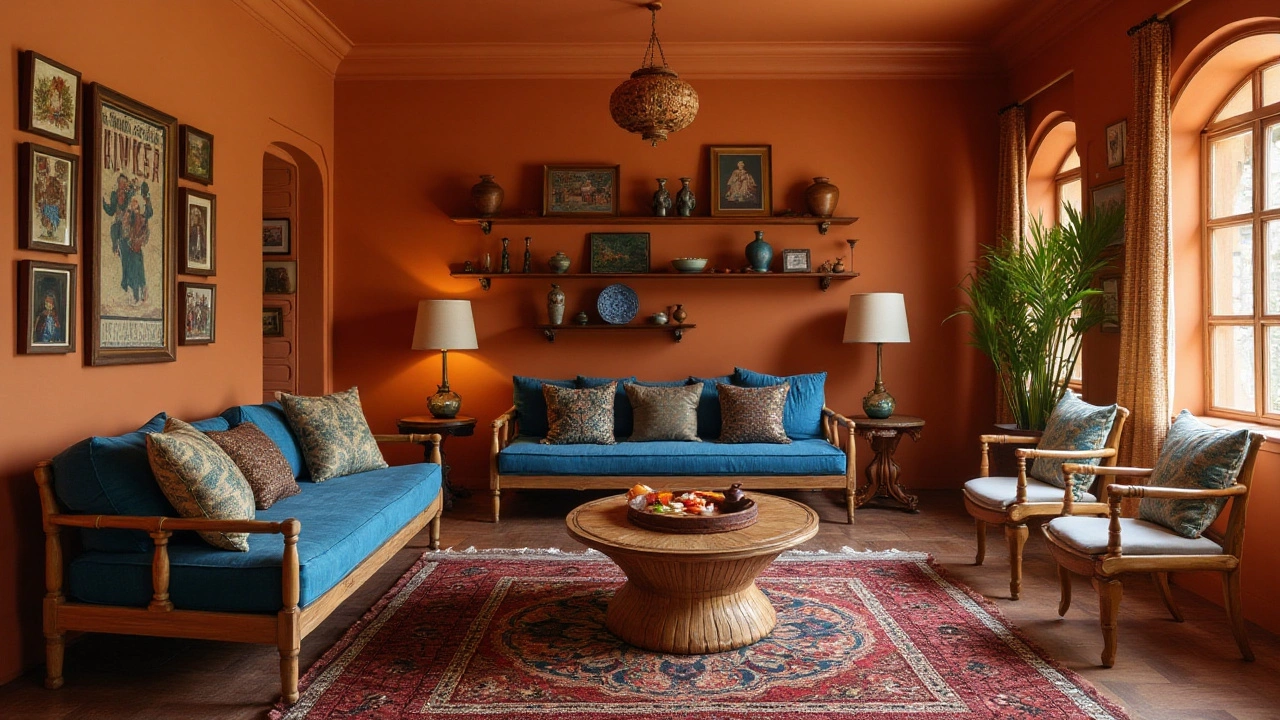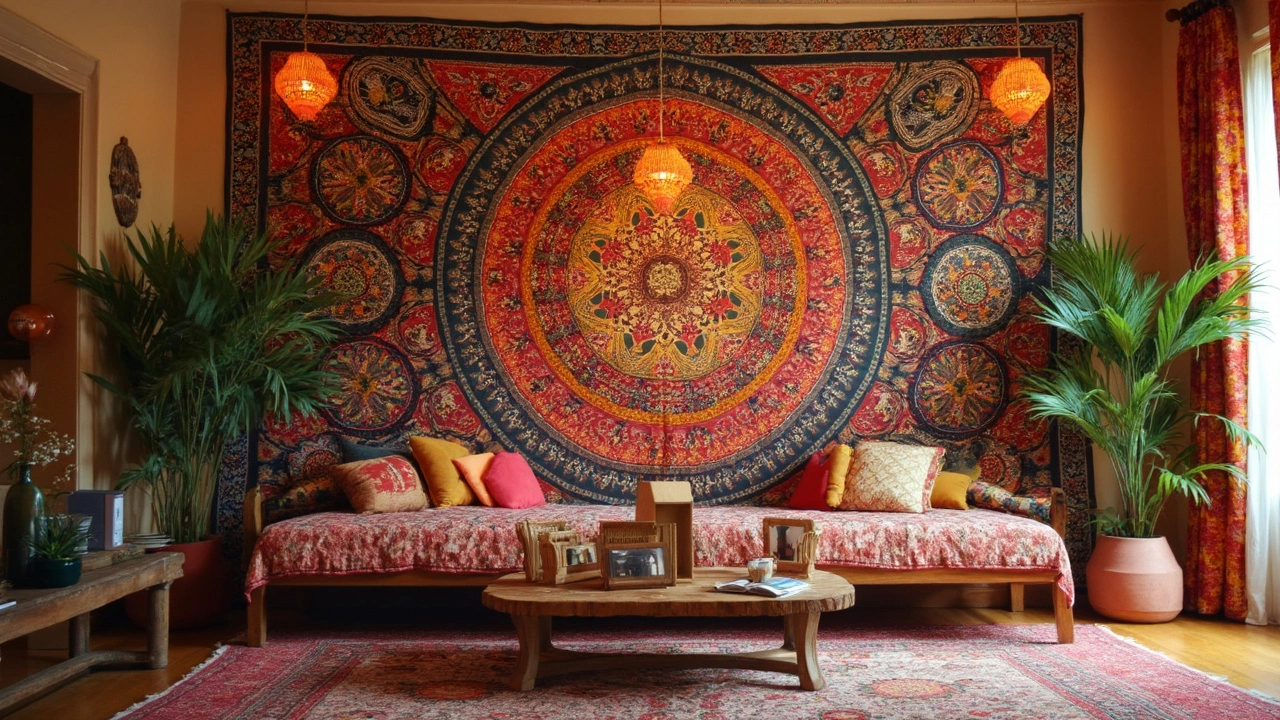Would you believe there’s a bigger demand for interior designers now than ever before? People are convinced their homes should feel like places in magazines, and with remote work sticking around, that trend’s not slowing down. So, starting as a self-employed interior designer isn’t some wild fantasy. Every room you’ve flipped or friend’s house you’ve fixed up could be the start of your next paycheck—or the start of your own business. Ready to stop daydreaming and make “interior designer” your job title on your taxes? Here’s how to get moving, right from your living room desk.
Understanding What Interior Designers Really Do
Picture this: you walk into a lifeless, cookie-cutter living room. Now imagine a place that feels like the owner’s personality jumped off their Instagram feed and landed on the couch. That’s what interior designers do—they transform spaces into something functional, eye-catching, and unique. You’re not just slapping paint on a wall or rearranging couches. Good designers think about lighting, mood, ergonomics, how people actually use the room, and even stuff like the environmental impact of a sofa.
To get real, you’ll juggle a lot: drawing up plans, picking paints, choosing fabrics, figuring out storage, wrestling with budgets, and talking with clients who might not have a clue what they want. Plus, you deal with vendors, installers, and sometimes cranky landlords. There’s a side of the job that feels like therapy—clients might call in a panic because the tile isn’t the perfect shade of white or their grandma hated the wallpaper. So, people skills matter as much as an eye for color.
Don’t believe me? According to the U.S. Bureau of Labor Statistics, interior designers held about 61,000 jobs in 2024, and 27% were self-employed, which is a lot. The same stats say demand is expected to bump up 4% this decade, as people keep focusing on making homes and offices not just pretty but livable and eco-friendly. It’s not all Parisian lofts either; some of the coolest design trends come from tight urban apartments or even tiny homes. That means there’s a place for everyone’s taste, not just “luxury.”
Interior designers aren’t required by law to have a license in every state, but some places have rules if you want to call yourself a “registered interior designer.” Most freelancers skip that step unless they work on big commercial spaces or government projects. And if you ever wondered about how much pros make, check this out:
| Region | Average Annual Salary (USD) |
|---|---|
| United States | 62,000 |
| Canada | 54,000 |
| United Kingdom | 40,000 |
Those numbers go way up if you break into higher-end markets or focus on commercial clients, but even solo designers make real money. The secret isn’t art school—though that helps—it’s mixing design talent with hustle.
Building Your Skills and Credentials
Think you just need “good taste”? Sure, style helps, but you’ll need more. Interior design mixes creativity with problem-solving and technical know-how. You can teach yourself a lot—from YouTube or free online courses—but having some recognized education or training makes a huge difference. Not everyone goes for a bachelor’s in interior design, but a ton of designers start with something like a short diploma, certificate programs, or online bootcamps. These usually cover CAD (computer-aided design) basics, color theory, space planning, lighting, and even client psychology.
Let’s talk about the National Council for Interior Design Qualification (NCIDQ). While not everyone needs it, this certificate can open doors with clients or bigger projects, especially if you want commercial work. NCIDQ requires education, experience, and passing their exam. Most self-employed designers stick to residential jobs, so this part’s up to you—but having a credential sets you apart, especially if you compete with design studios.
Aside from certificates, genuine experience matters more than paper on your wall. Volunteer to help family or friends redo their spaces. Join design competitions or local community projects. You can even pitch budget room makeovers to small local businesses (coffee shops, hair salons) and use before-and-after shots for your portfolio. Don’t just wait for famous clients to call—you build your own street cred.
Another underrated skill: digital tools. Everyone expects designers to use Pinterest or Instagram, but industry software like SketchUp, AutoCAD, or even advanced stuff like Revit gives you pro swagger and saves a ton of time. Plus, clients love seeing virtual walkthroughs of their space before you start swinging a hammer.
Pro tip: get good at communicating your ideas without using “designer speak.” Clients have nightmares about snooty designers who use ten words for “white.” Be the one who talks like a real person while still showing off the wow-factor ideas you’ve got.

Setting Up Your Business and Portfolio
This is where you stop being “just creative” and start thinking like a real business owner. Self-employment in interior design means you’re the boss, the assistant, the accountant, and the marketing team—at least for a while. Start simple: choose a name you can live with on business cards, or use your own name for transparency. Next, check your local rules about registering a business and whether you need special permits. Some areas want home-based businesses to file with the city, while others don’t care as long as you pay your taxes.
Bank accounts? Never mix your business money with your pizza money, trust me. Open a specific account for your design funds—clients will take you more seriously, and your tax season headaches will vanish. Plus, you’ll blow through fewer receipts looking for that IKEA purchase from six months ago.
Now comes the fun part: building your portfolio. Forget expensive print books. The best portfolio is a slick, mobile-friendly website loaded with incredible before-and-after pictures. Don’t stress if you’re just starting—use those family kitchens, your own apartment, or a friend’s office. Show your process: hand sketches, mood boards, digital renders, finished space. People want to see how you think through problems. Add testimonials (even if they’re from your aunt Sharon), and explain what challenges you solved in each project.
Include a simple contact form so people can actually reach you. Use your social media—Instagram’s perfect for design, but LinkedIn matters too if you want office or retail jobs. Don’t be shy about DMing local realtors or contractors offering design help. You’d be surprised how much business starts from a single smart message.
On pricing: start with packages. Maybe “Virtual Makeover—$200” or “Full Service—let’s chat.” Don’t just quote whatever feels right; research local rates and don’t go too cheap. Undercutting the market might get you a few clients, but it makes people question your skills. Think of it this way: if a pair of sneakers costs five bucks, you won’t trust they’ll last. Same vibe with bargain-basement design fees.
Finding and Keeping Clients
So many designers stall here. They “open for business,” then wait for people to just find them. It doesn’t work like that. You need to talk about what you do—all the time. Start with a real pitch: describe your service in a couple sentences a kid could understand. “I turn boring houses into personalized homes, using your style and stuff you already own if you want to save cash.” Boom. Simple and clear.
Join local networking groups—think “Chamber of Commerce Breakfasts.” Seriously. Even if it sounds old-school, face-to-face meetings get you immediate trust. Bring your tablet and show off your portfolio at every chance. Offer a free room layout consult for new contacts. Realtors, general contractors, and even movers can send you clients, but only if they know you’re competent—and available.
Word of mouth still rules. Explore referral bonuses, like “You get a $100 gift card if someone signs on for a redesign.” Encourage every happy client to post Google and Instagram testimonials with pictures. People look for reviews as much as they look for photos—no review, no trust.
Smart designers don’t overlook small jobs. Helping someone pick paint colors or arrange existing furniture might look minor, but the client could refer you for a whole-home project or recommend you to their network. Always treat every client like your most important one. Never ghost anyone—quick, friendly replies build your reputation and keep people talking about your business.
Here’s something crucial: create systems. Use an easy-to-follow onboarding email, set deadlines for every step (first draft, mood board, client approvals), and use contracts—simple, clear, and legally downloaded templates. No handshake deals. Spell out the work, the costs, how revisions get handled, and your payment schedule so everyone’s clear. It keeps you protected and cuts down on awkward conversations later about “where’s my refund?” or endless changes with no extra pay.

Growing Beyond Your First Clients
No one wants their design business to stall at “side hustle.” So, how do you grow once you’ve got a few happy projects under your belt? For starters, keep an eye on what’s trending in the world of self-employed interior designer work. Right now, people care about eco-friendly upgrades. Add sustainable materials like recycled glass tiles or secondhand furniture finds to your packages—it lets you stand out in a crowded field. There’s a massive boom in remote work setups too, so offer home office-specific layouts or ergonomic updates.
Look for local partnerships. Team up with handymen, electricians, or even local furniture stores. Maybe you get a small cut on referrals, or maybe you just build up a web of folks who send you business. A designer who makes their client’s project run smoothly by connecting them to reliable contractors wins instant loyalty (and more word-of-mouth leads).
Never stop documenting your projects. Social media (Instagram, TikTok, even Pinterest) isn’t just for showing off—the more great content you post, the more you show potential clients what’s possible for their own homes. Use hashtags that clients in your city would use, like #NYCInteriorDesign or #LondonHouseMakeover, so people searching locally find your work.
Think about specializing if you spot a market gap in your area. Maybe you lean into color consulting, designing kid-safe spaces, or making rentals renter-friendly without drilling holes everywhere. Being “the guy who’s great with small apartments” or “the person for bold color makeovers” is better than being lost in the crowd of generalists.
Polish your operations as you scale up. Try basic project management tools (Trello, Notion). Hire freelancers for photo editing or website updates—never stop at “good enough.” And review your pricing at least once a year to make sure you’re paid what you’re worth; don’t let old fees stunt your business.
Most importantly, keep learning and stay humble. Every year, trends change, clients surprise you, and even experts mess up measurements now and then. Admit mistakes, own your process, and always aim for a home that makes someone say, “Wow, I never imagined my space could look like this.” That reaction, more than any paystub or social post, is what keeps designers in love with what they do.



